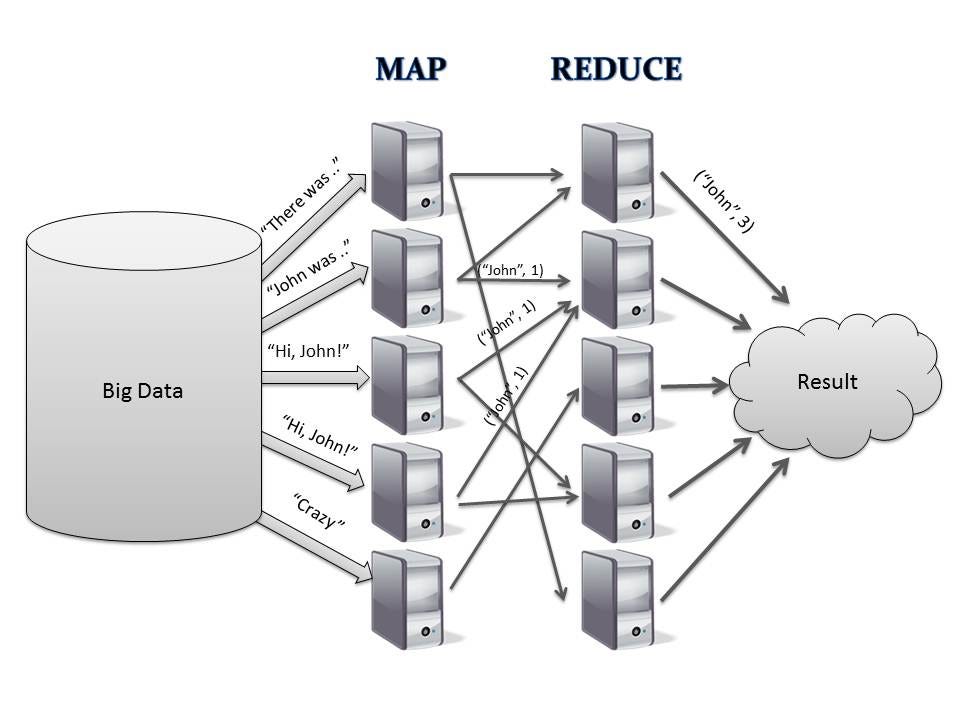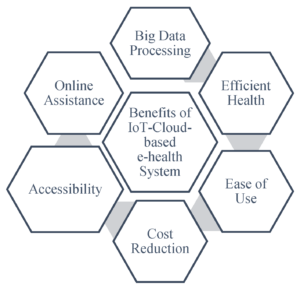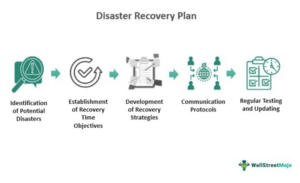Welcome to our comprehensive guide on understanding and implementing Big Data Architecture Diagrams. In this article, we will delve into the intricacies of this powerful tool, its significance in the world of data analysis, and how it can potentially revolutionize businesses across industries. Whether you are a seasoned professional or just starting your journey in the realm of big data, this guide will equip you with the knowledge and insights necessary to harness the true potential of big data architecture diagrams.
Understanding the Basics of Big Data Architecture Diagram
In this section, we will provide an overview of what exactly a big data architecture diagram entails. We will explore the core components and the fundamental principles that underpin this diagram, giving you a solid foundation to build upon.
Anatomy of a Big Data Architecture Diagram
A typical big data architecture diagram consists of various interconnected components that work together to process and analyze large volumes of data. These components include:
- Data Sources: The starting point of any big data architecture diagram is the collection of data from diverse sources such as databases, social media platforms, IoT devices, and more.
- Data Ingestion: Once the data sources are identified, the next step is to ingest the data into a central storage system, such as a data lake or a data warehouse.
- Data Processing: After ingestion, the data goes through various processing stages, including cleansing, transformation, and enrichment, to make it suitable for analysis.
- Data Storage: Processed data is then stored in a structured or unstructured format, depending on the requirements of the analysis tasks.
- Data Analysis: The stored data is then analyzed using various techniques, such as statistical analysis, machine learning, or data mining, to derive meaningful insights and patterns.
- Data Visualization: The final step involves presenting the analyzed data in a visual format, such as charts, graphs, or dashboards, to facilitate easier interpretation and decision-making.
The Core Principles of Big Data Architecture Diagram
To design an effective big data architecture diagram, it is important to adhere to the following core principles:
- Scalability: The architecture should be scalable to handle large volumes of data and accommodate future growth.
- Flexibility: The architecture should be flexible enough to accommodate different types of data sources and analysis techniques.
- Performance: The architecture should be optimized for efficient data processing and analysis, ensuring timely insights.
- Security: Data security and privacy should be prioritized throughout the architecture, with appropriate measures in place to protect sensitive information.
- Integration: The architecture should seamlessly integrate with existing systems and technologies within the organization.
The Importance of Big Data Architecture Diagram
Discover why big data architecture diagrams are crucial in modern-day data analysis. We will discuss the numerous benefits they offer, from improved data management to enhanced decision-making, and how they contribute to the overall success of an organization.
Enhanced Data Management
A well-designed big data architecture diagram allows organizations to efficiently manage and organize vast amounts of data. By establishing clear data pipelines and storage mechanisms, it becomes easier to track and access relevant data for analysis. This improved data management leads to better data governance, reduced duplication, and increased data quality.
Improved Decision-Making
One of the key advantages of a big data architecture diagram is its ability to provide valuable insights that drive informed decision-making. By integrating data from various sources and applying advanced analytics techniques, organizations can uncover patterns, trends, and correlations that were previously hidden. These insights enable businesses to make data-driven decisions, optimize processes, and identify new opportunities.
Efficient Data Processing
A well-structured big data architecture diagram ensures efficient data processing, enabling organizations to handle large volumes of data in a timely manner. By leveraging technologies such as distributed computing frameworks and parallel processing, data can be processed in parallel, significantly reducing the time taken for complex analysis tasks. This efficiency translates to faster insights and a competitive edge in today’s fast-paced business landscape.
Enhanced Data Governance and Compliance
With stringent data governance regulations and privacy concerns, organizations need to ensure that their big data initiatives comply with legal and ethical standards. A comprehensive big data architecture diagram helps establish robust data governance practices, including data access controls, data lineage tracking, and compliance monitoring. This not only ensures regulatory compliance but also builds trust among customers and stakeholders.
Real-World Applications of Big Data Architecture Diagram
Explore the practical applications of big data architecture diagrams in various industries. We will dive into case studies and examples that demonstrate how this diagram has been successfully implemented to solve complex problems and drive innovation.
Healthcare: Improving Patient Outcomes
In the healthcare industry, big data architecture diagrams have been instrumental in improving patient outcomes and healthcare delivery. By integrating data from electronic health records, wearable devices, and genetic databases, healthcare providers can gain a comprehensive view of patient health and identify patterns that help diagnose diseases earlier, personalize treatment plans, and predict potential health risks.
Retail: Enhancing Customer Experience
Retailers leverage big data architecture diagrams to gain insights into customer behavior, preferences, and purchase patterns. By analyzing data from multiple touchpoints such as online transactions, social media interactions, and in-store sensors, retailers can personalize marketing campaigns, optimize pricing strategies, and enhance the overall customer experience.
Finance: Fraud Detection and Risk Management
Big data architecture diagrams play a crucial role in the finance industry, particularly in fraud detection and risk management. By analyzing large volumes of transactional data in real-time, financial institutions can identify suspicious activities, detect fraudulent transactions, and minimize risks. The integration of machine learning algorithms further enhances the accuracy of fraud detection models.
Transportation: Optimizing Logistics and Route Planning
In the transportation industry, big data architecture diagrams are used to optimize logistics and route planning. By analyzing data from GPS devices, traffic sensors, and weather forecasts, transportation companies can identify the most efficient routes, predict traffic congestion, and optimize fuel consumption. This leads to cost savings, improved delivery times, and reduced environmental impact.
Designing an Effective Big Data Architecture Diagram
In this section, we will guide you through the process of designing a robust and efficient big data architecture diagram. From determining data sources to selecting the appropriate technologies, we will provide actionable tips and best practices to ensure your diagram meets your specific requirements.
Identifying Data Sources
The first step in designing a big data architecture diagram is to identify the data sources that are relevant to your analysis objectives. This could include structured data from databases, unstructured data from social media platforms, or even data from IoT devices. By understanding the nature of the data and its sources, you can determine the appropriate storage and processing mechanisms required.
Choosing the Right Technologies
With the plethora of big data technologies available, choosing the right ones for your architecture is crucial. Factors such as scalability, performance, and integration capabilities should be considered. Popular technologies for big data architecture include Apache Hadoop, Apache Spark, and cloud-based platforms like Amazon Web Services (AWS) and Google Cloud Platform (GCP). It’s important to evaluate and select technologies that align with your organization’s specific needs and goals.
Data Ingestion and Processing
Once you have identified the data sources and selected the appropriate technologies, the next step is to design the data ingestion and processing pipelines. This involves defining the data flow from the sources to the storage and processing layers. Technologies such as Apache Kafka, Apache NiFi, or cloud-based services like AWS Kinesis or GCP Pub/Sub can be used to efficiently ingest and process the data in real-time or batch mode.
Data Storage and Management
After data ingestion and processing, it is essential to determine the storage and management mechanisms for your big data architecture diagram. Depending on your requirements, you may choose to store the data in a data lake, a data warehouse, or a combination of both. Technologies like Apache HDFS, Apache Cassandra, or cloud-based solutions like AWS S3 or GCP BigQuery can be utilized for storing and managing the data effectively.
Data Analysis and Visualization
Once the data is stored and managed, the next step is to analyze and visualize the data to derive meaningful insights. This involves applying various analytics techniques, such as statistical analysis, machine learning, or data mining, to uncover patterns and trends. Tools like Apache Spark, Python libraries like Pandas and NumPy, or dedicated analytics platforms like Tableau or Power BI can be used for data analysis and visualization.
Challenges and Considerations in Big Data Architecture Diagram
Learn about the potential challenges and considerations that come with implementing a big data architecture diagram. We will discuss scalability, security, data quality, and other key factors that need to be carefully addressed to ensure a successful implementation.
Scalability and Performance
Scalability is a critical factor in big data architecture, as it involves processing and analyzing enormous volumes of data. Ensuring that your architecture can scale horizontally by adding more computing resources, or vertically by upgrading existing resources, is essential. Additionally, optimizingthe performance of your architecture through techniques like data partitioning, parallel processing, and distributed computing frameworks will help handle the increasing demands of data processing and analysis.
Data Security and Privacy
With the rise in data breaches and privacy concerns, ensuring the security of your big data architecture is of utmost importance. Implementing robust access controls, encryption mechanisms, and data anonymization techniques can help protect sensitive information. It is also crucial to comply with relevant regulations, such as the General Data Protection Regulation (GDPR), to maintain data privacy and build trust with customers and stakeholders.
Data Quality and Governance
Poor data quality can negatively impact the accuracy and reliability of your analysis results. It is essential to establish data quality checks and cleansing processes to ensure the integrity of your data. By implementing data governance practices, such as data lineage tracking and metadata management, you can ensure that data is properly documented, validated, and maintained throughout its lifecycle.
Integration with Existing Systems
Integrating your big data architecture with existing systems and technologies within your organization can be a complex task. It is important to consider compatibility issues, data integration challenges, and the impact on existing workflows. By carefully planning and implementing integration strategies, such as data connectors and APIs, you can ensure seamless data flow and interoperability between different systems.
Skills and Expertise
Implementing and managing a big data architecture requires a certain level of technical expertise and skills. It is important to have a team with the necessary knowledge in areas such as data engineering, data science, and cloud computing. Investing in training and upskilling your team or partnering with external experts can help overcome any skill gaps and ensure the successful implementation and management of your big data architecture diagram.
Tools and Technologies for Big Data Architecture Diagram
Explore the wide array of tools and technologies available for creating and managing big data architecture diagrams. We will provide an overview of popular options, their features, and how they can streamline your diagram creation process.
Apache Hadoop
Apache Hadoop is an open-source framework that provides distributed storage and processing capabilities for big data. It consists of two main components: the Hadoop Distributed File System (HDFS) for storing large volumes of data across multiple machines, and the MapReduce programming model for parallel processing of data. Hadoop is widely used for its scalability, fault-tolerance, and ability to handle structured and unstructured data.
Apache Spark
Apache Spark is a fast and general-purpose cluster computing system that provides in-memory processing capabilities for big data. It offers a wide range of APIs, including Spark SQL for querying structured data, Spark Streaming for real-time data processing, and MLlib for machine learning tasks. Spark’s ability to cache data in memory and perform iterative computations makes it a popular choice for big data analytics.
Amazon Web Services (AWS)
Amazon Web Services (AWS) provides a wide range of cloud-based services for big data architecture. Services like Amazon S3 for storage, Amazon Redshift for data warehousing, and Amazon EMR for processing large datasets using frameworks like Hadoop and Spark, enable organizations to build scalable and cost-effective big data architectures in the cloud.
Google Cloud Platform (GCP)
Google Cloud Platform (GCP) offers a comprehensive suite of tools and services for big data architecture. Google BigQuery provides a fully managed data warehouse for analyzing large datasets, while Google Cloud Storage offers reliable and scalable storage options. GCP also provides services like Dataflow for real-time data processing and Dataproc for running Apache Spark and Hadoop clusters.
Tableau
Tableau is a powerful data visualization tool that can be integrated with big data architectures to create compelling visualizations and dashboards. With its intuitive drag-and-drop interface and extensive library of visualizations, Tableau enables users to explore and communicate insights from their big data analysis effectively.
Power BI
Power BI, a business analytics service by Microsoft, offers a suite of tools for data visualization, reporting, and dashboarding. It supports integration with various data sources, including big data platforms, allowing users to create interactive visualizations and gain valuable insights from their data.
Best Practices for Maintaining and Updating Big Data Architecture Diagrams
Discover essential best practices for maintaining and updating your big data architecture diagrams. We will discuss the importance of regular reviews, documentation, and the role of collaboration in ensuring your diagram remains relevant and effective over time.
Regular Reviews and Assessments
It is crucial to conduct regular reviews and assessments of your big data architecture diagram to ensure its effectiveness and alignment with changing business needs. This involves evaluating the performance, scalability, and security of your architecture, identifying any bottlenecks or areas for improvement, and making necessary updates to optimize its performance.
Documentation and Version Control
Documenting your big data architecture diagram is essential for knowledge sharing and maintaining consistency. It is recommended to create detailed documentation that includes the purpose, components, and workflows of your architecture. Additionally, version control practices should be implemented to track and manage changes to the diagram over time, ensuring that the latest version is always accessible and up to date.
Collaboration and Communication
Collaboration and communication are vital for the successful maintenance and updating of your big data architecture diagram. Encourage cross-functional collaboration between teams such as data engineering, data science, and IT operations to ensure effective communication of updates, changes, and requirements. Regular meetings and discussions will help align stakeholders’ visions and address any challenges or concerns that arise during the maintenance process.
Continuous Learning and Training
Keeping up with the latest advancements and trends in big data technologies is essential for maintaining an effective architecture diagram. Encourage continuous learning and training for your team to ensure they stay updated with new tools, techniques, and best practices. This will enable them to make informed decisions when updating or expanding your big data architecture to meet evolving business needs.
Future Trends in Big Data Architecture Diagram
In this section, we will explore the exciting future trends and advancements in big data architecture diagrams. From the integration of AI and machine learning to the emergence of new data processing techniques, we will provide insights into what lies ahead for this powerful tool.
Integration of AI and Machine Learning
The integration of artificial intelligence (AI) and machine learning (ML) techniques into big data architecture diagrams is expected to accelerate in the future. AI and ML technologies can automate data processing, enhance predictive analytics capabilities, and enable real-time decision-making. By leveraging these technologies, organizations can gain deeper insights from their big data and achieve more accurate and efficient analysis results.
Edge Computing for Real-Time Insights
Edge computing, which involves processing data at the edge of the network near the data source, is gaining traction in the big data landscape. By moving processing closer to the data source, organizations can reduce latency and bandwidth requirements, enabling real-time insights and decision-making. Edge computing also addresses concerns related to data privacy and security by minimizing data transfer and storage in the cloud.
Serverless Architectures for Scalability
Serverless architectures, where the cloud provider manages the infrastructure and automatically provisions resources as needed, are becoming popular for big data processing. With serverless architectures, organizations can scale their big data processing capabilities dynamically without the need for manual provisioning or managing complex infrastructure. This flexibility and scalability enable businesses to handle sudden spikes in data volume and optimize costs by paying only for the resources used.
Graph-Based Data Processing
Graph-based data processing is emerging as a powerful technique for analyzing interconnected data and relationships. By representing data as a graph, organizations can uncover complex patterns and relationships that are not easily discoverable using traditional analytics techniques. Graph databases and graph processing frameworks, such as Apache Giraph and Neo4j, are being increasingly adopted in big data architectures to handle graph-based analysis tasks.
Success Stories: Organizations Leveraging Big Data Architecture Diagrams
Discover how leading organizations are leveraging big data architecture diagrams to drive innovation and gain a competitive edge. We will showcase real-world success stories that highlight the transformative impact of this tool on businesses.
Netflix: Personalized Recommendations
Netflix, the popular streaming service, leverages big data architecture diagrams to analyze user behavior, preferences, and viewing patterns. By processing and analyzing massive amounts of data, Netflix can provide personalized recommendations to its subscribers, enhancing customer satisfaction and driving engagement.
Uber: Real-Time Data Analysis
Uber, the ride-sharing company, utilizes big data architecture diagrams to process and analyze real-time data from millions of drivers and riders. By analyzing this data, Uber can optimize driver allocation, predict demand patterns, and provide accurate ETAs, resulting in a seamless experience for its users.
Facebook: Targeted Advertising
Facebook employs big data architecture diagrams to analyze user data and preferences for targeted advertising. By processing and analyzing vast amounts of data, Facebook can deliver highly relevant ads to its users and provide valuable insights to advertisers, maximizing the effectiveness of their advertising campaigns.
NASA: Space Exploration and Research
NASA utilizes big data architecture diagrams to analyze and process data from satellites, telescopes, and space probes. By analyzing this data, NASA can gain insightsinto celestial phenomena, planetary exploration, and climate patterns. Big data architecture diagrams enable NASA to store, process, and analyze vast amounts of data to further our understanding of the universe and contribute to scientific advancements.
Resources for Further Learning
Access a curated list of resources, including books, online courses, and research papers, to further expand your knowledge and expertise in big data architecture diagrams.
Books:
- “Big Data: A Revolution That Will Transform How We Live, Work, and Think” by Viktor Mayer-Schönberger and Kenneth Cukier
- “Hadoop: The Definitive Guide” by Tom White
- “Data Architecture: A Primer for the Data Scientist” by W.H. Inmon
Online Courses:
- Coursera: “Big Data Specialization” by University of California, San Diego
- edX: “Introduction to Big Data” by University of Adelaide
- Udemy: “Apache Spark with Scala – Hands On with Big Data!” by Frank Kane
Research Papers:
- “The Google File System” by Sanjay Ghemawat, Howard Gobioff, and Shun-Tak Leung
- “MapReduce: Simplified Data Processing on Large Clusters” by Jeffrey Dean and Sanjay Ghemawat
- “Lambda Architecture: A Batch and Real-Time Data Processing System” by Nathan Marz
Conclusion
In conclusion, understanding and implementing a well-designed big data architecture diagram is crucial in today’s data-driven world. By following the principles and best practices outlined in this guide, you will be equipped to harness the power of big data and unleash its potential for your organization. Embrace the possibilities that a comprehensive big data architecture diagram offers, and embark on a journey towards enhanced decision-making, improved data management, and transformative insights.
Remember, a successful big data architecture diagram is not just a visualization tool; it is a roadmap to unlocking the untapped potential within your data.



